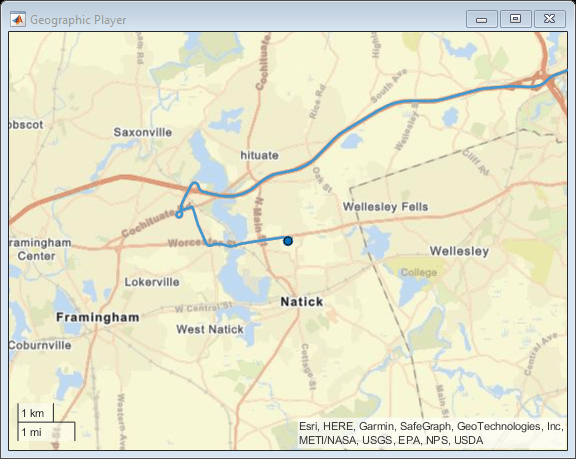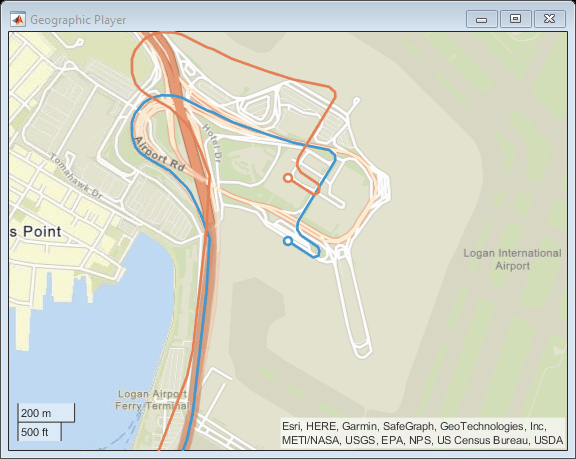plotRoute
Display continuous route in geoplayer figure
Description
plotRoute(
uses player,lat,lon,Name,Value)Name,Value pair arguments to modify the visual style of
the route.
For example, plotRoute(player,[45 46],[0 0],'Color','k') plots
a route in a geoplayer figure as a black line.
Examples
Input Arguments
Name-Value Arguments
Version History
Introduced in R2018a
See Also
geoplayer | plotPosition | reset | latlon2local | local2latlon
1 Alignment of boundaries and region labels are a presentation of the feature provided by the data vendors and do not imply endorsement by MathWorks®.

